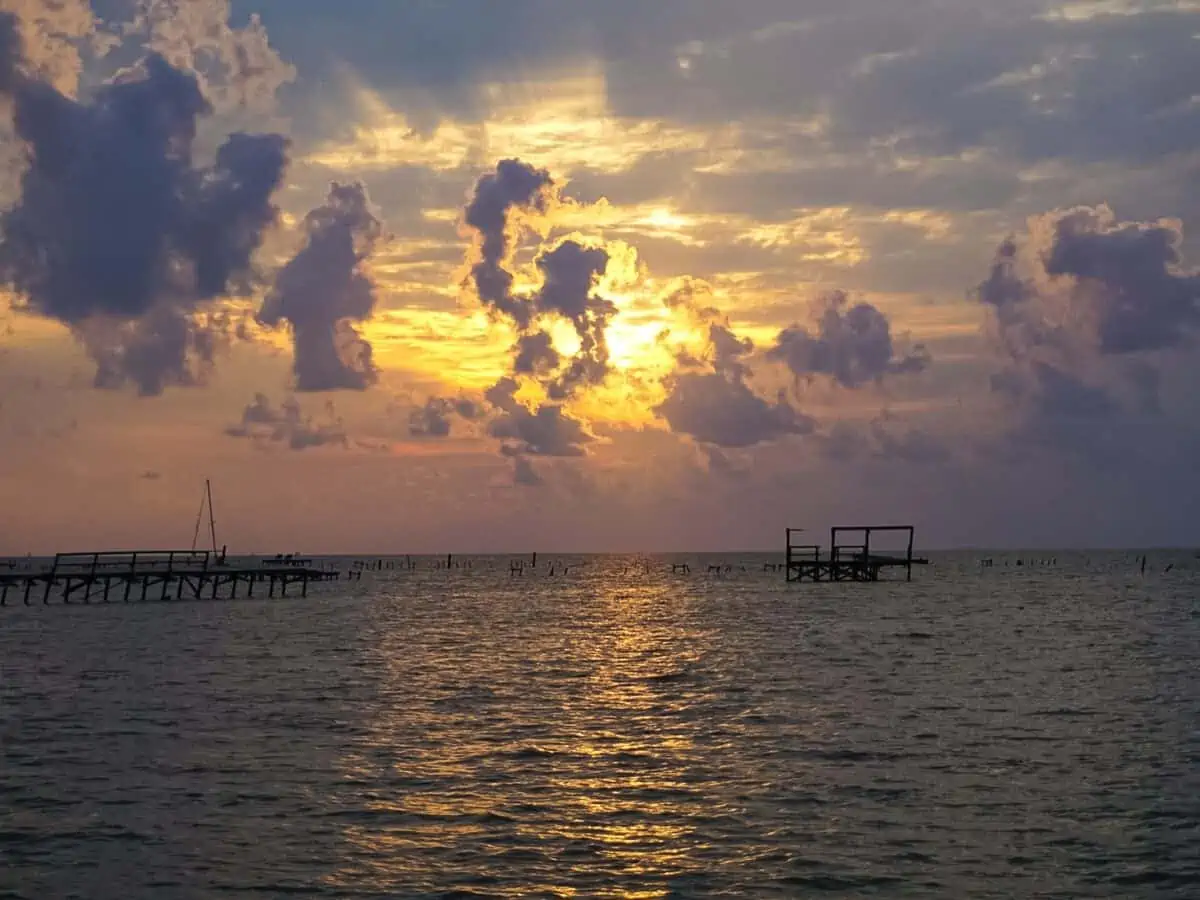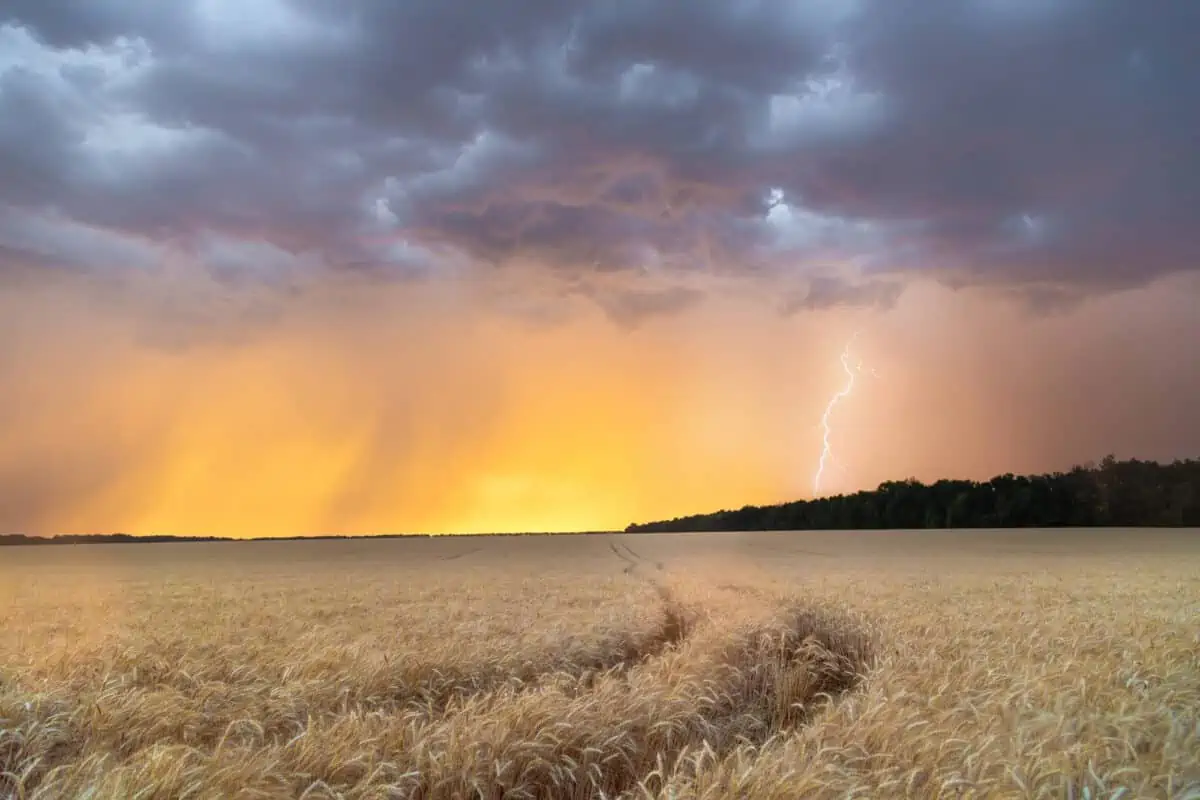Share the post "Texas Has Tornadoes (History – Damage – Prep)"
The air is eerily calm. It can smell like summer rain, freshly cut grass, or a mix of sulfur and burning wood. And then it sounds like a freight train is tearing through the town. These are descriptions of tornadoes as they run their destructive paths. If you’re planning a trip to Texas, relocating, or concerned, you may wonder if Texas has tornadoes.
Texas experiences the most tornadoes of all the states and forms part of the infamous Tornado Alley, and Houston is the city most often hit. While no area of Texas is entirely exempt from twisters, Central Texas, West Texas, and El Paso see the fewest. Texas averages 136 tornadoes per year.

Tornadoes In Texas
Partly due to its sheer size, Texas has more tornadoes than any other state. After all, the more ground space there is within a state’s borders, the more tornadoes it “owns.” The National Oceanic and Atmospheric Administration (NOAA) presented data showing that Texas has experienced 9535 tornadoes between January 1, 1950, and December 31, 2021.
Despite the many tornadoes, most are weak. Of the 9535 tornadoes, 77% were only F0/EF0 or F1/EF1 on the Enhanced Fujita Scale, and only 0.9% or 87 were rated F4/EF4 and F5/EF5.
Texas ranks eleventh in the country when comparing tornado density, averaging 5.7 twisters per 10 000 square miles annually, calculated between 1951 and 2011.
2015 saw the most tornadoes in a year, with 258 storms ripping through the state, which included the biggest outbreak in the history of Central Texas.
When Is Tornado Season In Texas?
While Texans can expect tornadoes any time of the year, they know that when spring arrives, it’s the beginning of the tornado season. The twister season is most prominent from April to June.
Evidence also suggests that most tornadoes hit between 4 pm and 8 pm! As the warm spring air collides with the last cold snaps of winter, these atmospheric cocktails transform into tornadoes.
Despite being a little early for tornado season, March 2022 saw the highest figures for that month, with around 40 twisters tearing through the Lonestar state. Those storms assaulted Fort Worth, Austin, San Antonio, Dallas, and Round Rock.
Texas Falls In The Tornado Alley
Tornado Alley is the collective name for the central United States areas with the most frequent tornadoes. It got its title from a 1952 research project of the same name, where climatologists studied severe weather in Texas, Oklahoma, Kansas, Louisiana, South Dakota, Nebraska, and Iowa.
Tornado alley doesn’t have strict boundaries, and western Ohio, Indiana, Minnesota, Wisconsin, and Illinois are also sometimes considered part of this belt.
Some research indicates that twisters are becoming more prevalent in the northern section of the Alley, reaching the Canadian Prairies.
Which Texas Areas Are Hit Worst By Tornadoes?
NOAA draws statistics on tornadoes from data collected between 1950 and 2021. Houston experienced more twisters than any other Texan city during that period, totaling 242. Second in line was Plainview, with 132 tornadoes during the same period.
When they adjusted the statistics for the area, Galveston County saw the most twisters, with 33 per 100 square miles. Johnson County came in second, with 14 twisters per 100 square miles.
The deadliest and most powerful twister in Texan history was the May 1953 Waco outbreak. It caused 114 of the 144 fatalities and was listed as an F5 tornado. It destroyed more than 600 houses, 1000 other buildings, and more than 2000 vehicles.
The 1902 Goliad tornado also killed 114 people, injured 250 others, and caused $125 000 worth of damage, which in today’s terms would equal $3.4 million.

Texas Cities Least Likely To Experience Tornadoes
With the listed statistics, it may seem best to live underground if you move to Texas, but that is far from true. Here is a list of the safest places in the Lonestar state that rarely see twisters.
- Midland
- Amarillo
- Rockwall
- El Paso
- Laredo
- Victoria
- Schertz
- Nacogdoches
- College Station
- Huntsville
Preparation For Tornado Season In Texas
If you’ve survived a few Texas tornado seasons, you will know how to cope with them. But for those new to twister territory, here are some tips to prepare for the season.
- Prepare your home for extreme weather by cutting down tree branches near your roof, removing dead trees, removing heavy debris, and shifting heavy outdoor furniture indoors. Putting up storm-proof shutters on windows and garage doors and a Class 4 impact-resistant roof can discount your home insurance rates.
- Make up an emergency kit with essential items you can take to your shelter when a twister arrives. Include enough water, dry groceries, baby formula, wet wipes, trash bags, a can opener, flashlights with extra batteries, a first aid kit, portable mobile phone chargers, a battery-operated radio, and a whistle to call for help.
- Decide on a place to take shelter. A basement or windowless room on the lower levels of your home is ideal. If necessary, move under a table or another furniture item and cover yourself with a mattress or blanket to protect your head from flying objects.
- Learn the signs of an approaching tornado. Watch out for circulating, funnel-shaped clouds, large hailstones, dark or greenish skies, loud noise like a freight train, and floating debris clouds.
- Sign up with the NWS to receive severe weather alerts.
- Stay alert for the latest storm news, listen to warning sirens, and keep abreast of alerts from radio stations and social media.
Measuring Tornadoes In Texas And Elsewhere
The National Weather Service (NWS) measures the strength of tornadoes using the Enhanced Fujita Scale. The NWS revised the older Fujita Scale in February 2007. They categorize the storms by the extent of the damage caused and estimate the wind speeds.
The NWS assesses the tornado-related damage and compares it to a list of Damage Indicators Dis) and Degrees of Damage (DoD), which better estimates the wind speeds that the tornado probably produced. See the below table for the EF Scale.
| EF Rating | 3 Second Gust |
| 0 | 65-85 mph |
| 1 | 86-110 mph |
| 2 | 111-135 mph |
| 3 | 136-165 mph |
| 4 | 166-200 mph |
| 5 | More than 200 mph |
FAQs About Tornadoes In Texas
What Causes Tornadoes?
Tornadoes originate from thunderstorms, forming when hot, humid air connects with cold, dry air, pushing the cold air over the warmer air. The warm, moist air then pushes up through the cold air, forming an updraft.
When the wind speed or direction varies sharply, the updraft rotates. As it turns, it draws more hot air from the thunderstorm, and the rotation speed accelerates. The jet stream (a strong atmospheric wind) adds extra energy to the tornado.
How Do Most Tornado Deaths Occur?
The primary cause of death during a tornado is flying debris. This is why authorities urge people to shelter in a basement or interior room, not in a mobile home. More than 50% of tornado deaths occur in such housing.
References:
- 9535 tornadoes: kxan.com
- Tornado Season April to June: policygenius.com
- Tornado Alley: en.wikipedia.org
- Safest Texan Cities: coverage.com
- Enhanced Fujita Scale: weather.gov
- How do most tornado deaths occur? Disasterphilanthropy.org
Share the post "Texas Has Tornadoes (History – Damage – Prep)"
Christian Linden is a seasoned writer and contributor at Texas View, specializing in topics that resonate with the Texan community. With over a decade of experience in journalism, Christian brings a wealth of knowledge in local politics, culture, and lifestyle. He holds a Bachelor's degree in Communications from the University of Texas. When he's not writing, Christian enjoys spending weekends traveling across Texas with his family, exploring everything from bustling cities to serene landscapes.











